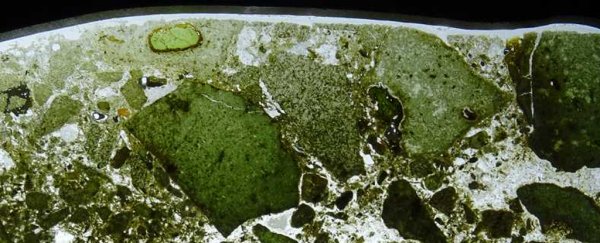The Cambrian Explosion – around 541 million years ago – was when life and organisms really got going on planet Earth. Now new research has revealed how that explosion of life has left behind traces deep within Earth's mantle.
For scientists, it shows the connected interplay between Earth's surface and what lies beneath, as sediments carrying organic material are pushed under the ground over vast geological timescales through subduction.
The new study looked at rare, diamond-filled volcanic rocks called kimberlites. When they're pushed up to the surface, they tell us what's happening deep in the mantle, and researchers measured the carbon composition in 144 samples taken from 60 locations around the world.
A prevailing view among geologists is that carbon trapped inside diamonds doesn't vary considerably over grand timescales of hundreds of millions of years.
Yet here the researchers found a shift in the ratio of specific carbon isotopes around 250 million years ago, about the time that sediment from the Cambrian Explosion would've been folded into the mantle. It's a shift potentially caused by the immense changes in the carbon cycle during a time when the biosphere was increasing in mass and diversity.
"These observations demonstrate that biogeochemical processes at Earth's surface have a profound influence on the deep mantle, revealing an integral link between the deep and shallow carbon cycles," write the researchers.
This link between the cycling of carbon close to the surface and deeper underground hasn't been easy to measure – and indeed it has changed significantly throughout the billions of years that Earth has been around, rather than staying fixed.
It does seem clear though that dead creatures trapped in sediment found their way into the mantle through plate tectonics. Their carbon remains mixed with other material before eventually reaching the surface again through events like volcanic eruptions.
The link was confirmed by further observations of strontium and hafnium in the samples. They matched the carbon pattern, narrowing down the number of possibilities for how these rock compositions were altered.
"This means that the signature for carbon cannot be explained by other processes such as degassing, because otherwise the isotopes of strontium and hafnium would not be correlated with those of carbon," says geochemist Andrea Giuliani from ETH Zurich in Switzerland.
Technically, what we're dealing with here is sedimentary subduction flux, and these carbon cycle details are important in terms of being aware of what's happening on our planet – especially as the effects of the climate crisis continue to be felt.
New studies continue to reveal more about how carbon is taken from and released back into the atmosphere, especially through the continuous recycling of the tectonic plates that make up the surface of the planet.
Scientists know that relatively speaking, only small amounts of sediment ever get pushed deep into the mantle through subduction zones, which means that traces of the Cambrian Explosion must have taken a direct route to the depths of the mantle.
"This confirms that the subducted rock material in Earth's mantle is not distributed homogeneously, but moves along specific trajectories," says Giuliani.
"Earth is really a complex overall system. And we now want to understand this system in more detail."
The research has been published in Science Advances.
